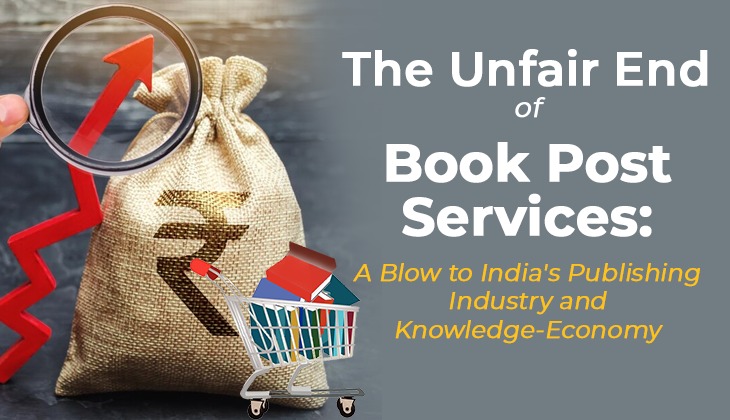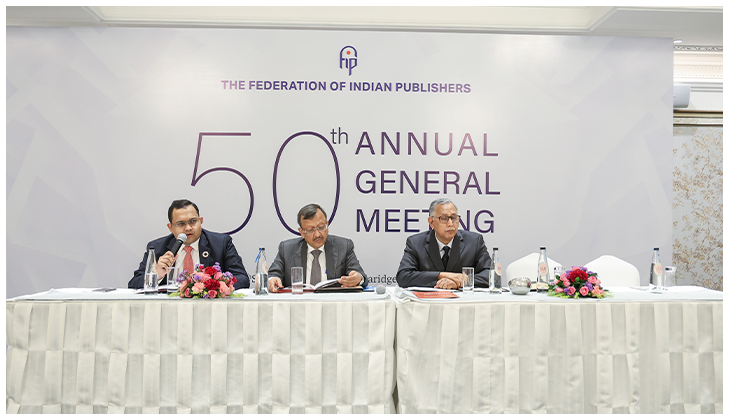I recently had the opportunity to speak amongst 77 national and foreign academicians from 35 countries while a dialogue on exploring the multifaceted dimensions of Indian Knowledge Systems was being discussed under the aegis of the “Knowledge India Visitors Programme.” Hosted by the Indian Council for Cultural Relations, this platform endowed me with the opportunity to speak on a topic rather close to my heart and one that I have spent decades spreading awareness about – “Career Opportunities for Students/Scholars in the Indian Publishing Industry.”
I have always believed that rather than being limited to ink and paper, and the screens as well, the publishing sector is more like the harbinger of ensuring knowledge, progress, and societal metamorphosis. As it is, history as we know it has been presented to us by our writers from ancient times, and if the documentation of our legacy needs to be cute, we cannot overlook the contribution of the publishing sector to the same. However, if I were to talk about the numbers it packs, apart from contributing a notable 0.08% to the nation’s GDP, the sector is currently looking at a growth potential of INR 1,000 Billion by March 2024. This stems from the fact that we are nothing short of a rising force globally as the Indian Publishing Industry presently has bagged the position of being the 3rd largest print book market worldwide, following the trajectories set by the USA and China and within the sphere of English language Book Publishing, we proudly hold the 2nd largest position globally, only after the USA. Moreover, with over 24,000 publishers adding to our strength, India’s print book market recently swelled to an estimated INR 720.6 billion in 2019-20, a number that other superpowers had a tough time competing with. This clearly indicates that the scope of employment in this realm is, though slightly untapped, increasing by leaps and bounds, especially after the pandemic.
With an industry and production scale this wide, it won’t be a stretch to say that the contemporary landscape of readership is not only responsible for nurturing the future architects of creativity and innovation but also stands as the backbone of a literate society, as the publishing industry also functions as a pipeline for knowledge dissemination. With its strongest pillar being the production of material for the education system, economically, it drives both domestic and international economies, with book exports ranging across 160 countries. Apart from devising study material for various African nations, the Indian publishing sector caters to the needs of the world’s largest youth and school-going population, which further allows it to fetch a CAGR (Compound Annual Growth Rate) of 19.4%.
This further is an indication of how the academic publishing sector contributes to roughly 96% (school sector – 71%, higher education – 25%) of the demand while the trade sector has in recent times grown to a 4% shareholder. Moreover, in the last decade or so, publication in local languages has seen a massive surge, which can be accounted for by the fact that India is the home to the world’s largest diaspora as per the UN. This sort of demand and supply chain, in return, creates a scope of vocational avenues for a large pool of aspirants, ranging from academics to translators to editors and the non-skilled workforce required to handle the non-scholarly aspects of the process.
Thus, I state again and with utmost surety that the horizons for aspiring publishers in India are gleaming with growth-driven opportunities as, to begin with, they can tap into the market of “Outsourced Services.” Here, the allure of India’s cost-effective publishing acts as a pulling factor for international publishing houses, and leveraging the scope of wealth generation in this area can truly alter the trajectory of revenue generation for any domestic publishing house. Moreover, with the New Education Policy in place, a larger focus has been laid on “Language Publishing,” including demand for indigenous narratives and textbooks in local languages. This all-time rise of “the local to global and vice-versa approach” fuels the rise of local and regional publishers, translating India’s cultural and academic landscape into an opportunity-rich field for the publishing sector to flourish.
Moreover, with the advent of OTT platforms, we have seen a mammoth rise in the collaboration of the media and entertainment industry with the barely tapped potential of the trade publishing industry. Through their adaptations, local authors are gaining national acclaim, which in return promises high rewards for the publishing realm. While all this offers a glimpse into an industry scale, one cannot overlook the fact that this industry births jobs for new Authors, Academic Writers, Editors, Translators, Graphic Designers, and Content Development Experts, all for the print publishing landscape itself, However, with audiobooks becoming all the rage, even the scope of jobs for Voice Over Artists has seen a spike in the publishing domain, followed by other allied professions like being a Literary Agent, Digital Marketing Expert, and a Sales and Marketing Expert as the aim is to ensure that the books and educational materials reach a diverse target audience.
While the range of vocational opportunities looks promising, I also believe that to strengthen the scope of the furtherance of it all, we need to incorporate a “Translators’ Guild of India” in our system as we don’t have provisions to safeguard rights and negotiate fair deals for translators. Moreover, we need to augment the scope of promoting translated Indian literature globally through effective cultural diplomacy as our export material is a massive strength in this domain. Lastly, apart from ensuring that the challenges related to ethical publishing and distribution are taken into account on a national level, we also need more initiatives like the ‘Padhe Bharat’ campaign as India stands at the cusp of a literary revolution, and channeling the reading process and prowess of the world’s biggest youth pool can truly be achieved by joining hands with India’s publishing realm.
As we hope to build a future where ink-cum-paper translates into opportunities of various kinds, it is highly crucial to encourage the development of an inclusive, well-informed, and growth-driven space for the storytellers and learners of tomorrow.
SOURCES –
https://www.statista.com/statistics/1309100/india-gdp-contribution-publishing-sector/#statisticContainer
https://publishingperspectives.com/2022/10/frankfurt-week-a-new-report-on-the-indian-market/
https://www.business-standard.com/content/press-releases-ani/india-s-print-book-market-will-hit-rs-1-lakh-croreby-2024-according-to-india-book-market-report-published-today-122093001007_1.html
https://thewire.in/world/india-has-the-worlds-biggestdiaspora#:~:text=India%20had%20the%20most%20people,as%20of%20the%20mid%2Dyear.



